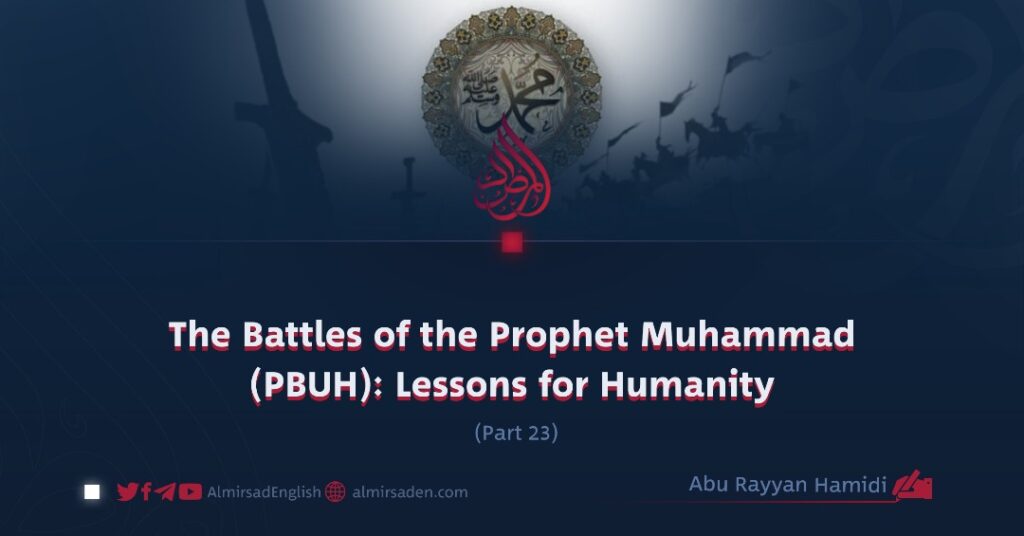Part 23
By Abu Rayyan Hamidi
The Campaigns That Followed the Battle of Badr
The victory at Badr marked a decisive turning point for the nascent Islamic state in Madinah. Its foundations were now firm, its authority recognized, and its influence felt throughout the region. As Islam spread rapidly, new followers joined its ranks almost daily. Yet this rise also stirred deep unease among hostile tribes and conspiratorial factions, who saw in Madinah’s growing power a threat to their own influence.
They could find no peace. Plots were whispered, alliances forged in secrecy, and schemes devised to destabilize the Prophet’s community. But Allah, the Almighty, continued to reveal their plans to His Messenger (PBUH), allowing the Muslim leadership to outmaneuver every attempt at subversion. In the months that followed Badr, several smaller expeditions took place. Two of these hold particular significance.
1. The Expedition of al-Kudr Against the Tribe of Banu Sulaym
Banu Sulaym, a tribe allied with the Ghatafan confederation, had gathered with the intention of striking Madinah unexpectedly. Barely a week had passed since the Muslims had returned from Badr, and the enemy assumed they would still be weary from battle. They believed the moment ideal for a swift and devastating attack.
When news of the plot reached the Prophet (PBUH), he acted without hesitation. With two hundred companions, he advanced toward the region of Kudr, where the enemy forces had assembled. The sudden movement of the Muslim army threw Banu Sulaym into confusion. Lacking the courage to confront them, they fled into the surrounding hills, abandoning five hundred camels in their retreat.
From the spoils, the Prophet (PBUH) set aside one-fifth (khums) for the state and distributed the remainder among the Mujahideen, granting each fighter two camels. He remained at Kudr for three days before returning to Madinah. During his absence, the city’s affairs were entrusted to Sibā’ ibn ‘Urfuta or Abdullah ibn Umm Maktum.
2. The Expedition of Sawiq
Abu Sufyan, still seething over his losses at Badr, swore that he would not purify himself from a state of major impurity (janabah) until he had fought the Messenger of Allah (PBUH). Burning with vengeance, he gathered two hundred horsemen and advanced toward Madinah.
He halted at the foot of Mount Nayb, about twelve miles from the city, yet he dared not launch a direct assault. Instead, he plotted a night raid that would terrorize its inhabitants. Under the cover of darkness, Abu Sufyan visited Sallam ibn Mishkam, a leader of the Jewish tribe Banu Nadir. There they drank wine and devised their plan of attack. Soon after, Abu Sufyan and his men slipped into a region called ‘Urayd, where they killed two Muslims, burned several date palms, and cut down others before fleeing into the desert.
When the Prophet (PBUH) was informed of the attack, he immediately set out in pursuit with two hundred emigrants (Muhajirun), following the enemy as far as Qarqarat al-Kudr. Abu Sufyan and his men, however, managed to escape. This campaign occurred in the second year after the Hijrah, about two months after the Battle of Badr, during the month of Dhu al-Hijjah. In the Prophet’s absence, Abu Lubabah was appointed to oversee Madinah’s administration.
The Meaning Behind the Name “Expedition of Sawiq”
During their hurried retreat, Abu Sufyan and his men threw aside the sacks of roasted barley and wheat flour (sawiq) they had brought as provisions, hoping to move faster under the strain of pursuit. The Muslims later collected these supplies and brought them back to Madinah. From that detail, the encounter came to be known as Ghazwat al-Sawiq, the Expedition of the Flour.
